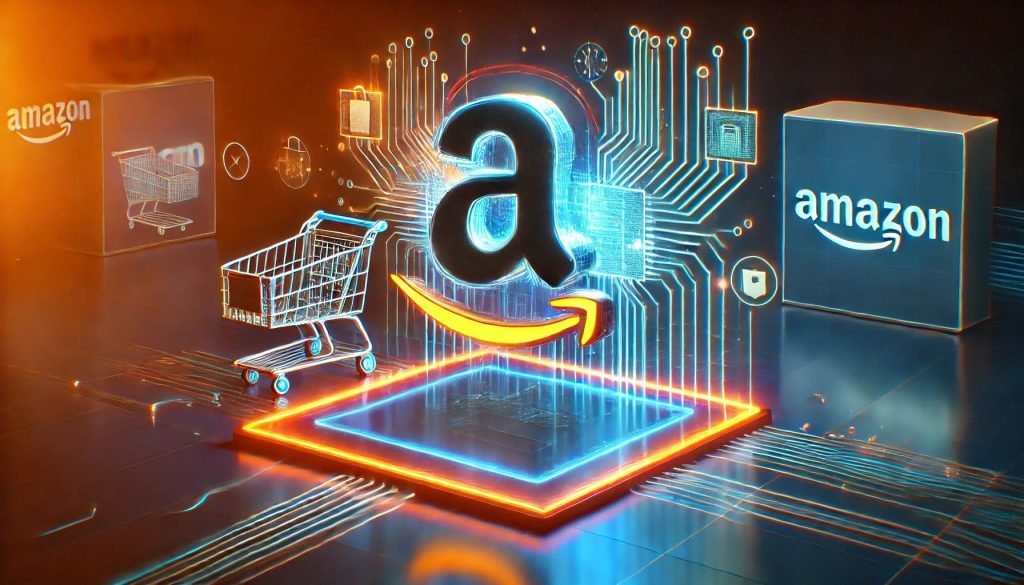
-
Apexlink
Real Estate
-
DLS
General Insurance
-
DMV
Government
-
Entiger
Fintech
-
GIS Mapping
Gas & Petroleum
-
HMS
Employee Benefit
-
HAWA
Government
-
Harley
Community
-
IHG
Hotel & Tourism
-
Sparkseeker
Humane Tech
-
Track Ninja
Sports
-
Response Vision
Disaster Management
- AI/ML Services
- Application Services
- Automation Services
- Cyber Security
- Chatbot Experts
- Data Analysis
- Data Warehouse Services
- Digital Commerce Services
- Digital Transformation
- Infrastructure Service
- Low Code/No Code
- Managed IT Services
- IT Support
- IT Consulting
- IT Outsourcing
- Mobile App Development
- IOS Development
- Android Development
- Cross Platform Development
- Gaming App Development
- Software Development
- System Design & Architecture
- Testing Services
- Web Development
One of the biggest conglomerates in the world, Amazon has been around and touching lives for almost three decades now. From being a book-selling platform in 1994, the company has come a long way to offer a plethora of products and services to its customers worldwide. And now, Amazon has managed to establish itself as one of the earliest and most successful adopters of artificial intelligence too.

AI is an emerging technology that is touching several lives at an enormous pace. Amazon, as one of the biggest companies in the world operating in the digital domain, is already utilizing mature artificial intelligence mobile applications services across various domains, such as logistics and warehousing, to streamline its operations. According to a recent report, as many as 35% of total sales by Amazon are driven by AI-based recommendation engines. Amazing, right?
Why are Certain Businesses Still Not Leveraging Custom AI Solutions?
Despite the success stories we hear about artificial intelligence services from tech giants such as Amazon, many businesses hesitate to adopt custom software development solutions because of the following common hurdles.
Lack of in-house AI expertise : Developing effective custom AI solutions requires specialized knowledge.
AI solutions that don't fit business needs : Off-the-shelf tools often fail to deliver the desired impact.
Scalability issues : AI solutions can buckle under real-world demands if not built for growth.
High development costs : Custom AI development services seem expensive and complex.
However, it is important to acknowledge that AI-powered e-commerce isn't just for the tech giants. With the right approach, your business can also benefit from custom AI solutions and mobile app development solutions that automate processes, improve customer experience, and unlock new revenue streams.

How Does Amazon Use AI?
From intelligent robots in Amazon's warehouses to the conversational AI platform Alexa runs on, every innovation stands as a testimony to how helpful artificial intelligence solutions can be if dealt with intelligently. The top-level management has time and again talked about following the 'flywheel approach' to keep up the momentum and conserve energy, so the innovations in one department are shared with others to help each part of the organization make the most of them.
In addition to their obsession with keeping customers above all else, Amazon's constant efforts toward refining its processes using emerging technologies, such as flywheel AI, help the company steer in the direction of greatness.
How Does Amazon Use AI Solutions?
Amazon has embraced artificial intelligence services in a number of ways to improve its operations and enhance the customer experience. Below are some core areas where Amazon's AI capabilities through custom software development solutions shine, along with takeaways for businesses looking to replicate Amazon's success.
Personalized Product Recommendations
One of the most well-known ways that Amazon uses AI is through its personalized product recommendations. When customers visit the Amazon website or app, they are presented with a list of recommended products based on their previous purchases and browsing history. These recommendations are generated using machine learning services and algorithms that analyze customer data and identify patterns and trends.
Business Takeaway:
Custom AI Recommendation Engines: By analyzing user behavior in real-time, businesses can deliver highly personalized suggestions that increase conversion rates.
Supply Chain Optimization

Amazon has a vast and complex supply chain, with millions of products being shipped worldwide. To manage this process efficiently, Amazon uses AI to forecast demand, optimize inventory levels, and route orders to the most efficient fulfillment centers.
Business Takeaway:
AI-Driven Logistics Software: Predictive analytics can help businesses foresee product demand, reduce waste, and improve delivery times.
Fraud Detection

With millions of transactions daily, Amazon is at risk of fraudulent activity. AI solutions help detect and block suspicious account activity, as well as identify and remove fraudulent listings.
Business Takeaway:
AI-Enabled Fraud Prevention: By flagging anomalies in real-time, businesses can safeguard their transactions and build customer trust.
Case Study : Screen Damage Detection
Customer Service

Amazon's virtual assistant, Alexa, uses artificial intelligence to provide quick and accurate answers to customer questions. This AI-driven support reduces the burden on human representatives and ensures a more efficient customer experience.
Business Takeaway:
Custom AI Chatbots & Virtual Assistants: Automating routine inquiries frees up teams to handle complex issues and improves response times.
Image and Video Analysis

Amazon uses artificial intelligence services to analyze images and videos for better product recommendations and to identify or remove inappropriate content. This technology ensures a safer platform and helps customers find products more easily.
Business Takeaway:
Visual Recognition Solutions: Applying AI-driven image or video analysis can enhance content moderation and improve the user experience.
Predictive Maintenance

In order to keep its fulfillment centers running smoothly, Amazon uses AI to predict when equipment is likely to fail. By analyzing data from sensors and other sources, the system schedules maintenance before issues escalate.
Business Takeaway:
Equipment Upkeep with Predictive Analytics: Implementing predictive maintenance can reduce downtime and operating costs.

Building AI Solutions Beyond Amazon's Model
You must have observed one thing: Amazon's success isn't about generic AI tools, it's about custom AI solutions that solve specific business challenges. While the examples above highlight how Amazon leverages AI, your organization can adopt similar strategies with a solution tailored to your unique context.
If you are looking to utilize AI-powered e-commerce development to take your business operations to the next level, choose an artificial intelligence development company you can trust. Seasia Infotech specializes in creating custom AI-powered software for:
a) Automating operations
b) Enhancing customer experiences
c) Boosting scalability and growth
d) Improving fraud detection and security
e) Implementing predictive analytics and insights
How We Solve Common Pain Points
- We bring specialized, cross-domain AI knowledge.
2. Our solutions are custom-built, not one-size-fits-all.
3. We develop robust AI architectures designed to grow with your business.
4. We work with you to optimize costs while delivering maximum ROI.
Final Thoughts
Amazon's use of artificial intelligence technology has helped the company to become more efficient, improve the customer experience, and increase its profitability. As Artificial Intelligence technology continues to advance, it is likely that Amazon will continue to find new and innovative ways to use it to improve its operations.
If you are looking to utilize AI ML development to take your business operations to the next level, choose an artificial intelligence services provider that you can trust. Contact Us !







 Blockchain
Blockchain Cloud Computing
Cloud Computing Infrastructure
Services
Infrastructure
Services Metaverse
Metaverse QA
Automation
QA
Automation UI/UX
UI/UX







